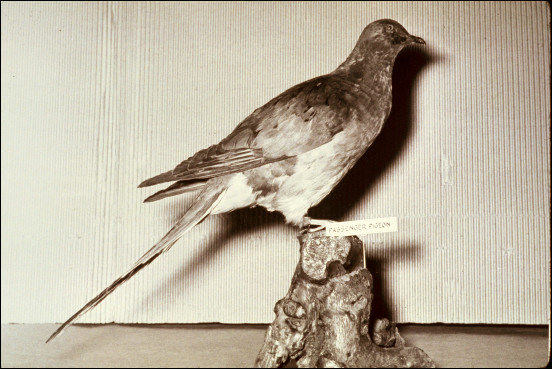

September 1, 1914, marks a momentous occasion: the extinction of a species. Martha, the last Passenger Pigeon, died in her cage at the Cincinnati Zoo, age 29. In reality, the species was doomed far earlier. Early descriptions of Passenger Pigeon populations indicate that likely several billion individuals graced the skies in the early to mid 1800s. One account estimated that a single migratory flock was about a mile wide and 300 miles long, and numerous accounts talk of flocks darkening the sky for hours on end.
What happened? Certainly one thing still putting species at risk:
habitat destruction. But probably the crucial blow was the growth of commercial
hunting. Records from Michigan cities indicating the shipping of vast numbers, up to
well over 1 million per year from some, tell the story. Apparently requiring some
minimum number of individuals in a breeding flock to successfully mate, population
numbers crashed. Judging from archaeological remains, our region never saw more than a
few lost wanderers, but even that now is never more to be.

Listen to the Audio (mp3 format) as recorded by KTEP, Public Radio for the Southwest.
Contributor: Arthur H. Harris, Laboratory for Environmental Biology, Centennial Museum, University of Texas at El Paso.
Desert Diary is a joint production of the Centennial Museum and KTEP National Public Radio at the University of Texas at El Paso.

Passenger Pigeon. Image by Luther Goldman, courtesy of the U.S. Fish and Wildlife Service.
Chipper Woods Bird Observatory